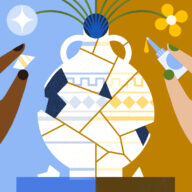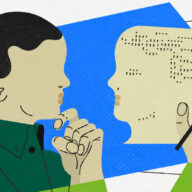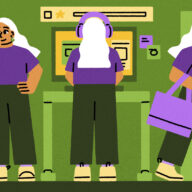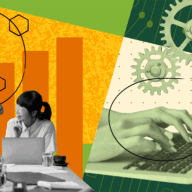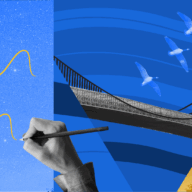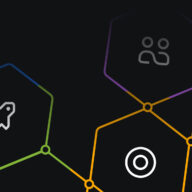Want to create better all-hands meetings? Here’s how
You don’t need celebrity MCs or flash mobs to make all-hands meetings engaging. Here’s how we do it.
If Robin Williams (may he rest in peace) was emcee’ing your company’s next all-hands meeting, would you go?
I used to work at a sizable, global company where we’d have quarterly all-hands meetings. Now, credit where credit is due, those all-hands meetings included some impressive elements: rock-concert style lighting, the occasional live band… and yes: Robin Williams even dropped by once.
But every time an all-hands meeting rolled around, there was still a surprising amount of eye-rolling among us rank-and-file on our way to the auditorium. I’m sure the organizers were like, The possibility of Robin Williams isn’t good enough for you people?
Were we just jaded? A bit “too cool for school”? Maybe. Ok: probably.
What’s certain, though, is that we didn’t much care for one-way broadcasts from the powers that be. Executives talked to at us from the stage while we dutifully listened. And that’s a shame because they were missing out on a golden opportunity to build trust and foster a sense of community with employees.
A good all-hands meeting gives everyone from interns to VPs a chance to ask questions, voice concerns, and showcase their teams’ victories. They help people who don’t work closely together feel connected on a personal and professional level.
So if celebrity comedians and flashy lighting aren’t enough, what are the keys to meaningful all-hands meetings?
Start by defining what your all-hands meetings are about
An all-hands meeting brings the entire organization together to share updates, ask questions, and get to know senior leadership better. Unlike team- or department-level meetings, an all-hands meeting ensures everyone receives the same information and messages.
Obviously, how you define your all-hands meetings will depend on your organization. But here are a few things we’ve done at Atlassian to make sure our all-hands meetings matter.
First, you might wonder: why have an all-hands meeting in the first place? Why not just send an all-staff email blast? And the answer is, you could. But emails are cold and impersonal, especially by comparison. Is that really the best way to communicate important information to your entire organization, especially considering the limitations of tone and delivery?
The truth is, hearing from executives (like, literally hearing their voices) goes a long way toward keeping employees personally invested and connected to the broader mission, especially as your company grows.
Use all-hands meetings to create a two-way dialogue
The main challenge of typical all-hands meetings is approach. “There’s the risk they turn into a lecture or webinar that nobody wants to attend,” says Atlassian’s Chief of Staff, Cathy Meade. And updates that are relevant to 70% of the company may prompt the other 30% to check Facebook for a few minutes. So, it’s important to change up the format regularly and craft agendas that include a little something for, and from, each department.
But the best all-hands meetings offer employees a chance to engage directly with founders and executives. At Atlassian, we do weekly half-hour “global town halls,” about 25 percent of which are devoted entirely to Q&A, and those that aren’t sometimes include space for impromptu questions.
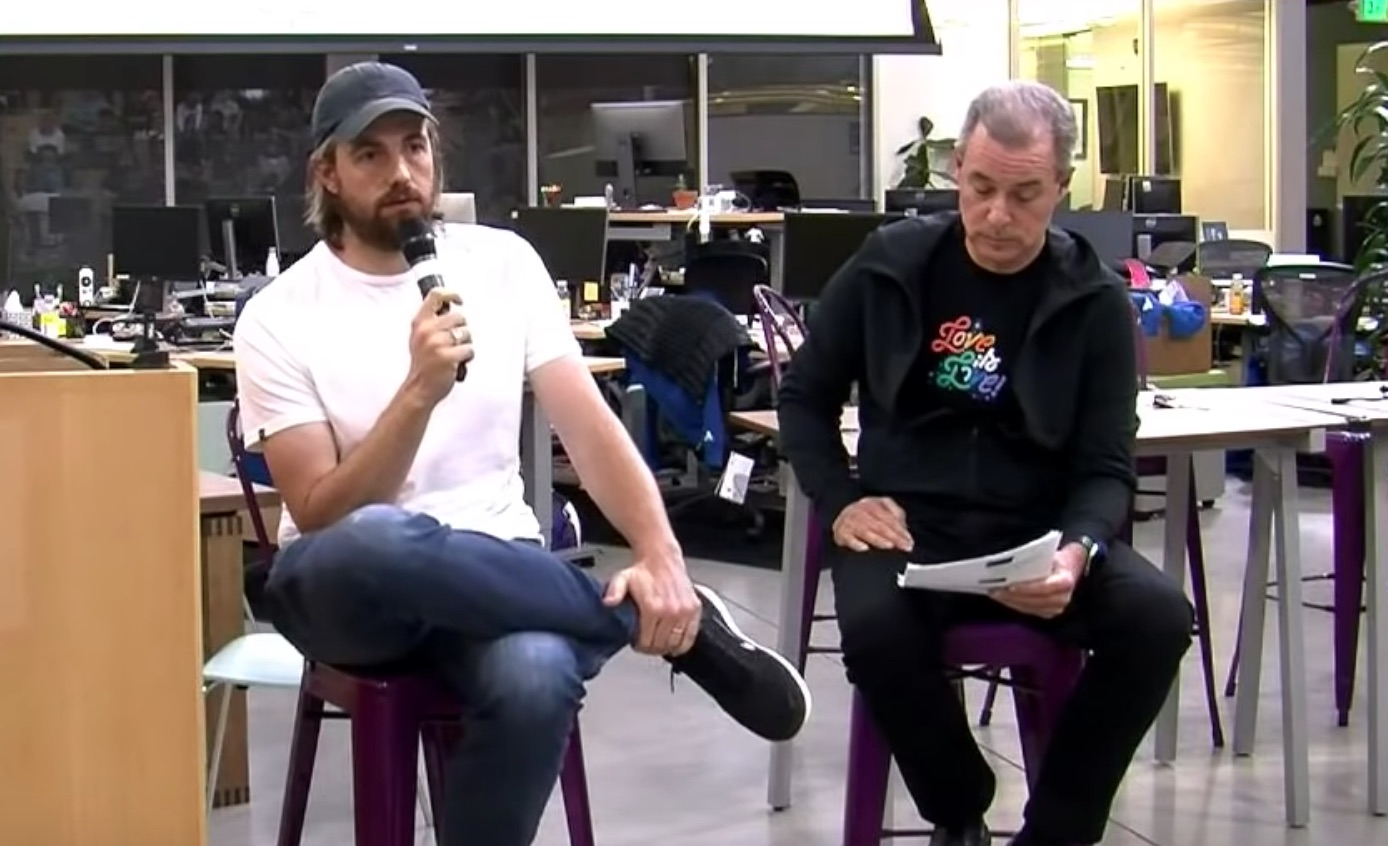
When we were much smaller, we’d simply raise our hands and pass a microphone to whomever was called upon. Now, to facilitate Q&A across a globally-distributed company of nearly 4,000 people, we submit questions in advance and up-vote those we most want answered. This transparent process ensures we all have a view into what’s on one another’s minds, and that we use the time we have answering the most pressing questions.
Dialogue between departments matters, too. To that end, we usually have at least one presenter who updates the rest of the company on a big project their team is working on, a big win they just scored, or even a big lesson learned.
The larger your company, the greater the perceived distance between executives and individual contributors, as well as between departments. Non-executive presenters and regular Q&A go a long way toward bridging that gap, which, in turn, fosters a sense of belonging and loyalty.
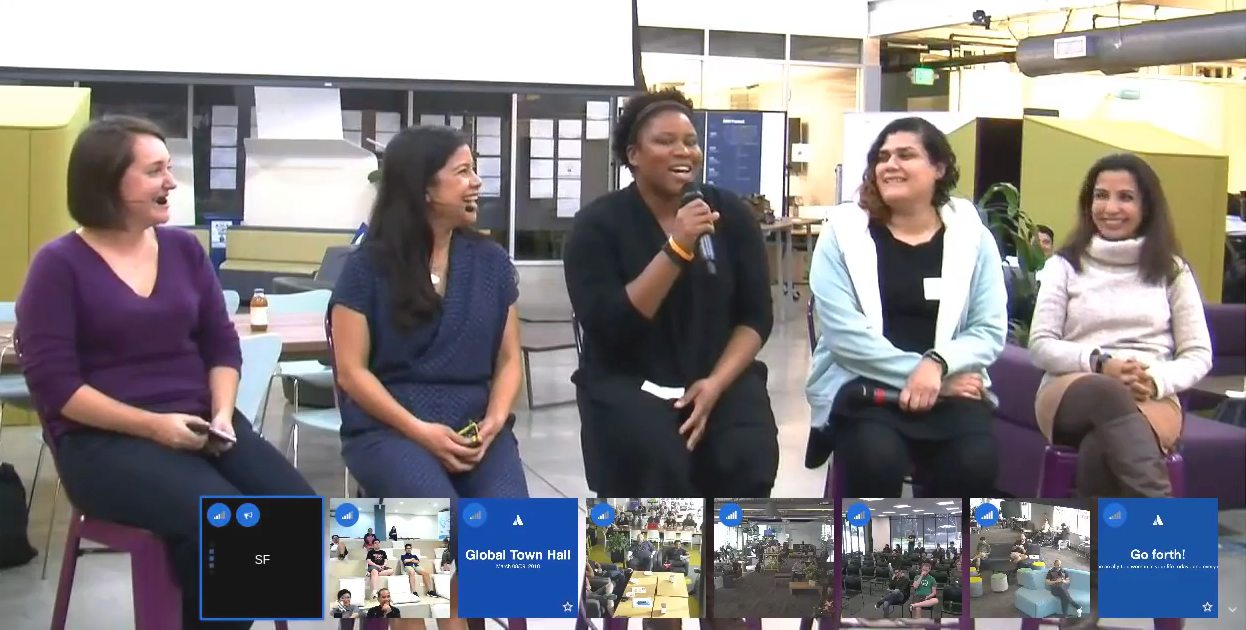
Don’t shy away from the tough subjects
If personal connection fosters belonging, candor fosters trust. So don’t avoid thorny issues or difficult news in an all-hands meeting.
For example, when Atlassian announced a new partnership with Slack that included shuttering Hipchat and Stride, it was a very emotional moment for everyone in the company. Anticipating this, our founders dedicated an entire hour-long all-hands meeting to the news, including an open Q&A. Being able to engage directly with the decision makers was empowering and left us feeling stronger as a community.
You don’t have to wait for major announcements, though. All-hands meetings are a great forum for sharing information that everyday employees wouldn’t expect to be privy to – financial details in particular. How much did we spend on X? Where are we making big investments this year? How much cash do we have in the bank?
In our experience, treating everyone as an insider and trusting them with insider information has yet to backfire. Indeed, trust breeds trust. Kind of an upward-spiral thing.
Distributed all-hands? Yes, you can!
Until a few years ago, Atlassian had monthly local all-hands meetings at our offices in Sydney, San Francisco, Austin, and Amsterdam. People loved the hyper-relevant agendas, but there were significant drawbacks. Information wasn’t always presented consistently across offices, and for those not working in our Sydney headquarters, seeing a founder at an all-hands was rare.
So we did what any self-respecting software company would do: we ran an experiment. For two months, we switched to a weekly 30-minute meeting with the whole company.
Challenge #1? Timezones.
There wasn’t a time on the clock that worked for every office, so we chose one that got us 80 percent of the way there, and started recording the meetings. In fact, our offices in Austin, Amsterdam, and Yokohama run the recording the following morning along with a company-sponsored breakfast, which helps build community within each office and fosters a feeling that each office is an equally important part of the company.
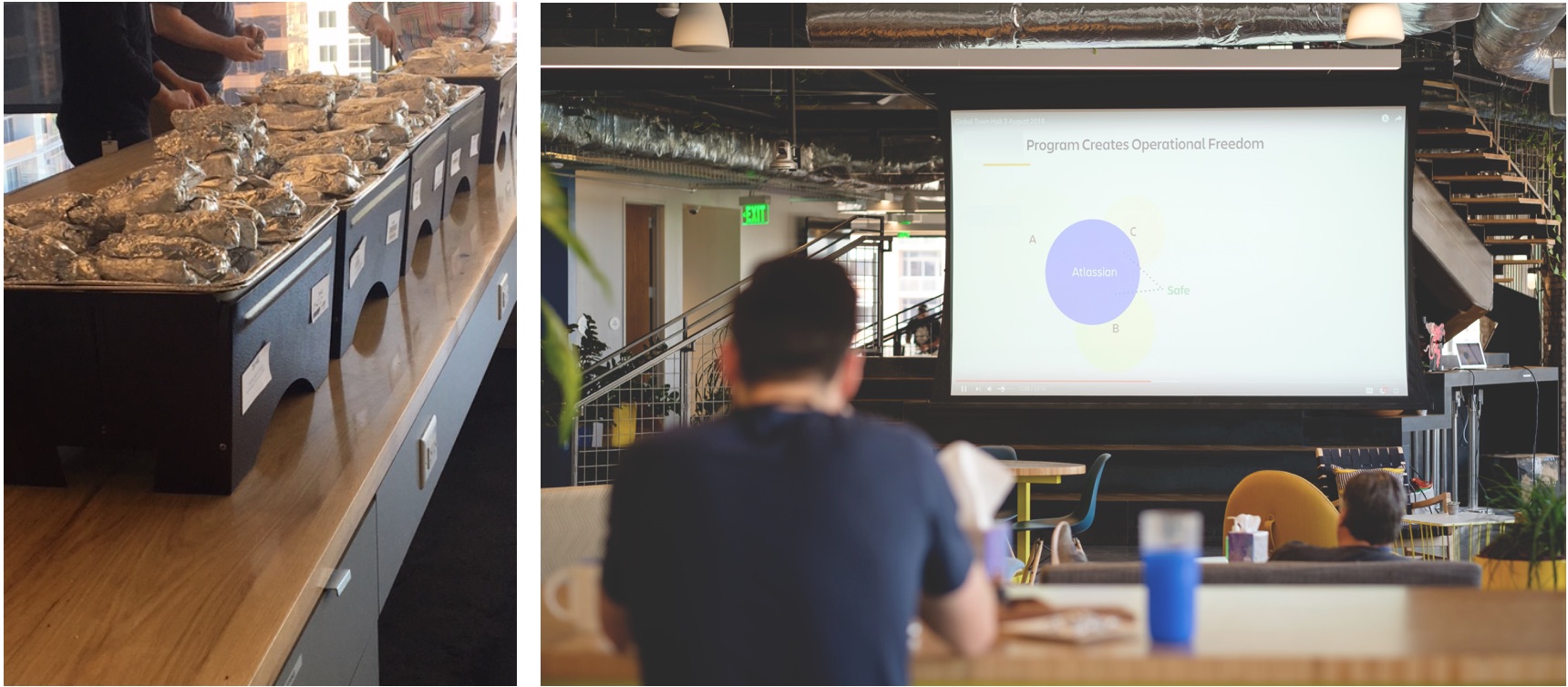
And when a team in one of those “out of timezone” offices has something to share with the rest of the company, we simply record their presentation beforehand and play it during the meeting.
In the name of varied and relevant content, in our experiment we dove right in and included presenters from multiple offices in each meeting.
Enter challenge #2: A/V setup.
After some trial and error with tools already on the market, our IT team built out a system that live-streams the meeting to all offices and lets you switch the feed to originate from a different office for each presenter. It also allows for live streaming to YouTube, a moderator, and the ability to control it all remotely. If you’re interested in trying it for your own distributed all-hands meetings, you can download it free at jitsi.org.
When everyone can see the other offices (and themselves!) on a live stream, the offices feel more connected and people are more likely to sit up and listen.
Louise Halloran, Communications Manager
Because the live-stream is a one-way feed, we changed up the Q&A format. Now, people submit and up-vote questions in advance and the executive hosting that week’s meeting answers as many as possible. This is similar to how other global companies, notably Apple and Oracle, handle all-hands Q&A.
Of course: don’t forget to have fun
You don’t need a live band (or a famous comedian on the order of Robin Williams) to make an all-hands meeting lively. It can be as simple as giving a few shout-outs.
At Atlassian, we start each all-hands meeting with the names, photos, and locations of all new hires, and then congratulate people who’ve passed their 3- and 5-year anniversaries. And we go all-out with a short “roast”-style video celebrating-slash-lampooning people who reach the 10-year mark.
If videos aren’t your thing, look for other talents hiding among your staff. Got singers? Beat-boxers? Dancers? Poets? Get them involved! Present an update as a Dr. Suess-style poem, or deliver it in costume. Ask a designer to create sketch-notes of the meeting to display afterward.
There are very few moments when singing and dancing can’t be worked in. (Trust me. We’ve tested the limits on this one.)
Recap: avoid these pitfalls of typical all-hands meetings
It’ll be obvious to every employee when you phone it in. Companies who hold all-hands meetings begrudgingly tend to make missteps like these:
One-way broadcasting – Audience participation is the key to meaningful all-hands meetings. It’s up to each company to decide how to implement it based on their size, geographical distribution, culture, etc. But remember: two-way dialogue.
Rolling out the spin machine – Don’t sugar-coat tough news or try to pass it off as somebody else’s fault. Be honest, be vulnerable, be adults.
Criticizing competitors – Taking a tone that’s competitive to the point of aggressiveness may energize a handful of people, but most will find it ugly, immature, and alienating.
Making inside jokes – Whatever joke you crack, make sure 99 percent of the company will get it. Even subtle comments like, “Yeah, you know Matt is gonna go binge-watch Westworld tonight” can divide the company into a cool-kids’ club plus everyone else when many people don’t even know which Matt you’re referring to – much less his TV habits.
Under-preparing presenters – Brief them on what to do if there’s an A/V failure, and if they’re the last presenter, equip them with a good wrap-up line so it’s clear the meeting is over.
Making meetings as effective as possible is a worthy investment. Creating all-hands meetings that matter doesn’t require a full event staff. It just requires some thoughtful planning and a willingness to listen.
. . .
Browse our collection of articles about meetings, like 1-on-1s, kick-off meetings, and how to know when you can avoid a meeting altogether.
Read more about meetingsShout-out to Cathy Meade and Lousie Halloran for their contributions to this piece – thank you!


